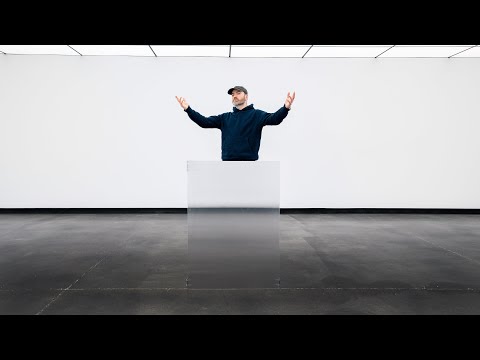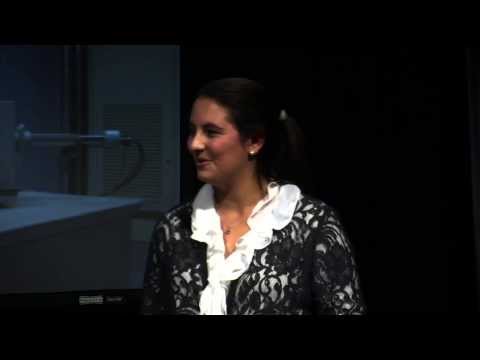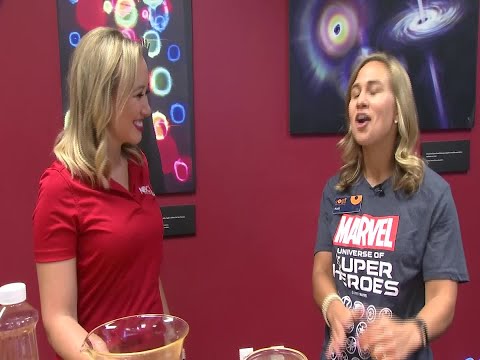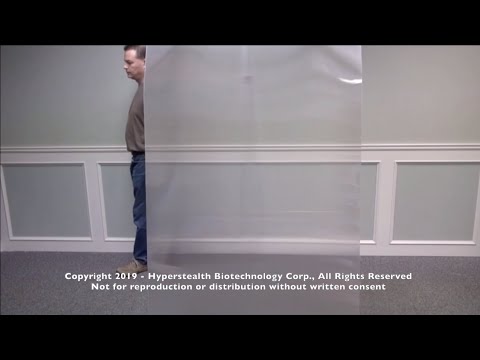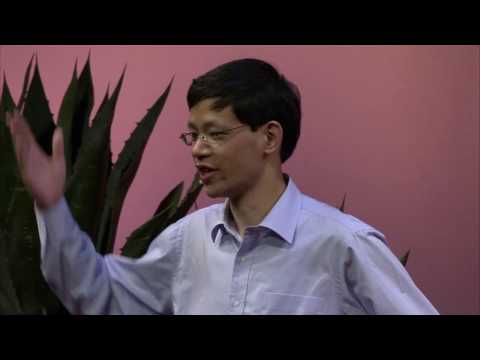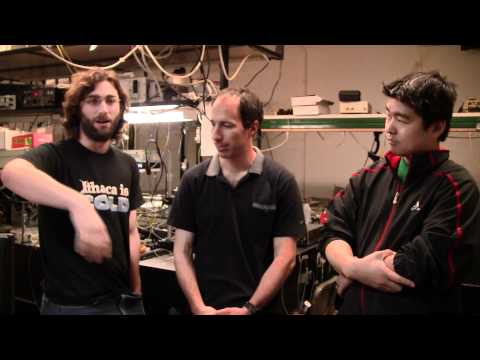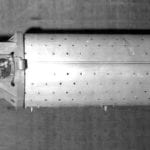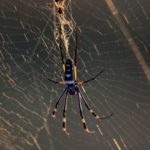10 Rochester University Cloak
Joseph Choi’s Rochester Cloak doesn’t render objects completely invisible, but it does have a couple of advantages over more sophisticated devices. First, it’s less expensive and more practical. The Rochester cloak uses four standard achromatic lenses with two different focal lengths, all of which can be bought at a typical optics store. Watch this video on YouTube Together, the lenses narrow a beam of light between one lens and the next before the beam widens again, filling the following lens. As a result, a doughnut shape is created around the tightest focal point. Any object or objects occupying the space around the lens’s center point become invisible. A video demonstrating the Rochester cloak in action is quite impressive, indeed.[1]
9 Invisibility Shield
Most invisibility devices are pricey, but thanks to a Kickstarter campaign in April 2022, the Invisibility Shield set buyers back only about $65 for a small size (12.2 x 8.3 inches or 31 x 21 centimeters). The full-size shield, measuring 37.4 x 25.6 inches (95 x 65 centimeters), costs $389. Unfortunately, the shields will have almost certainly sold out by now. However, as the campaign demonstrated, invisibility devices need not be only for the wealthy few; the shield, if mass-produced, should be well within most people’s means. The device, manufactured by Invisibility Shield Company, diffuses light with a set of upright] lenses, so observers see a reflection of objects to their left and right rather than what’s directly in front of them. The effect can be a bit patchy looking, though. According to the company, it’s best to use the shield in an area with a “uniform background, such as foliage, sand, the sky, or asphalt,” so that the shield’s view matches the surrounding area.[2]
8 Nanoscale Cloak
Inspired by both her love of Harry Potter and fencing, a sport in which slashing and poking one’s opponent is possible, Northwestern student Julia Abelsky, who majored in both math and statistics, developed her nanoscale invisibility cloak. According to a Campus Life article concerning the inventor, Abelsky’s cloak is made of “a diblock copolymer that mimics the unusual refractive properties of the mineral calcite.” Abelsky uses an analogy to explain how her device cloaks objects. She mimicked the way that water flows around a boulder in a river by directing a stream of light particles around objects. Since the diverted particles no longer strike the object, they cannot bounce back or refract from the object and hit our eyes. As a result, we do not see the object; it becomes invisible to us. Invisibility has multiple practical applications, not only for the military but also for radar, deep-sea sensors, super lenses, and, possibly, the development of “high-powered glasses” that would enable people who are currently considered too blind to see.[3]
7 Bare-Bones Invisibility Demonstration
Kelli Kinzig, the manager of Education Experiences at Marvel’s Universe of Super Heroes exhibit at the Center of Science and Industry (COSI) in Columbus, Ohio, talked to a local news station’s meteorologist through COSI’s demonstration of invisibility. The equipment was commonplace and inexpensive: vegetable oil, a pair of tongs, protective gloves, two glass beakers, and a small glass flask, with the last two items being transparent. Kinzig explained that objects are visible due to light’s reflection (bouncing back from an object to the eye) and refraction (bending away from an object). By immersing the small flask in a beaker of vegetable oil, she rendered the beaker invisible, except for its markings indicating volume levels. Next, she set the smaller beaker full of vegetable oil into a larger one filled with the same substance, and the smaller beaker also vanished, except for its markings. Kinzig explained that the combined abilities of the beakers and the vegetable oil to refract light eliminated “the refraction and the reflection” and made the object inside the beakers seem to disappear.” The markings on the flask and the smaller beaker, remaining visible, made it clear to viewers that the glassware itself had disappeared—or seemed to have done so. Although the demonstration was low-tech, it did employ an invisibility cloak of sorts. It exemplified the principles by which much more sophisticated invisibility cloaks function, helping young visitors to the exhibit grasp the science of invisibility.[4]
6 Quantum Stealth Cloak
Canada’s Hyperstealth Biotechnology is going beyond camouflage as a means of concealing soldiers on the battlefield. Now, the company is making not only troops but also tanks, aircraft, and ships invisible using a patented “Quantum Stealth” material. Like most other stealth technology techniques, this process works by bending light around objects, but with the advantage that it needs no power source and is both paper-thin and inexpensive. A broadband invisibility cloak works as effectively with “ultraviolet, infrared, or shortwave infrared light.” A video demonstrates the product’s effectiveness.[5]
5 Thinner Invisibility Cloak
When it comes to invisibility, the thinner the cloak, the better. Nia Brown’s article on a cloak made of metamaterials explains why. Such engineered materials are designed to distort perception but can also “interact with various types of electromagnetic radiation in a way that natural materials cannot.” Since thicker materials are bulkier than the objects they are intended to conceal and less reflective than thinner ones, the object to be hidden appears darker than its surroundings, which actually emphasizes the object’s presence. The “single layer sheet of Teflon-containing ceramics” developed by electrical engineers at the University of California, San Diego (USCD) makes whatever it covers look completely flat and eliminates the stark contrast in intensity between the covered object and its surroundings, thereby controlling light reflection. As Boubacar Kanté, a professor in the Department of Electrical and Computer Engineering at the UCSD Jacobs School of Engineering, puts it, “Using this technology, we can do more than make things invisible. We can change the way light waves are being reflected at will.” In the future, such technology will probably allow objects to be rendered completely invisible. Energy and optical communications industries are apt to find such cutting-edge technology indispensable.[6]
4 Invisible Carpet Cloak
Research concerning invisibility has become international in scope. In Singapore, researchers have successfully hidden a cat and a goldfish in broad daylight. How? A glass wall plays tricks with light, directing illumination away from objects to be hidden. Behind the illusion is what its inventor, Zhang Baile, assistant professor for physics at Nanyang Technological University, refers to as an “invisible carpet cloak” using light-bending Calcite crystals. Baile’s cloak requires no special conditions. It works well in both air and water and can be used on a large scale. The invisible walls do have limitations, though. The cloak’s ability to make things invisible works “from only six directions” and is bulky and hard to move around. However, the device has potential applications in both thermal management and photon circuits. Baile says he remains committed to furthering innovative invisibility research, and Singapore, the Silicon Valley of Asia, is investing millions in such work.[7]
3 Active Camouflage Invisibility
In the past, camouflage has been a passive undertaking involving the wearing of uniforms designed to blend with terrain features or draping large objects, such as tanks, in similar material. Now, active camouflage material exists that could conceal personnel and equipment from infrared or visual detection. However, to date, only a few experiments have succeeded in effectively cloaking “objects from precise wavelengths and certain vantage points.” Active camouflage promises better results. Mimicking the way that such animals as squid and chameleons alter their appearance to match their surroundings, the objects to be hidden seem to change their appearance to match their surroundings. In reality, screens show observers photographs of objects or scenery on the other side of the object. Instead of seeing the object, the viewer sees what the screen displays in its place. In principle, this technique is effective, but there are a lot of bugs to be worked out. These include too many cameras are needed to capture the 360-degree view required to camouflage an object. Also, the quality of the images obtained can be degraded by resolution limitations and lens distortions. The equipment is heavy and requires a lot of power, and lag time between image transmissions from cameras to screens “can also spoil the effect when the object or its surroundings [is] moving.” Possibly, additional research, new developments in photography and transmission, and lighter equipment can remedy these challenges.[8]
2 Time Cloak
Most invisibility cloaks work best on stationary objects or objects that exercise limited movement. Not so Cornell University’s time cloak. Imagine that a sequence of action lasting a split second has been inserted into a movie. In watching the film, viewers do not see the inserted material; it’s as though the action sequence is invisible to them. Researchers at Cornell University did something similar, except that, instead of an action sequence, they used fiber optics to split a beam of light in two. One moves faster, the other slower so that neither of them is visible in the “time lens” created by other beams traveling through the cable. Instead of bending light around an object, as other invisibility cloaks do, the time cloak masks an event in time. Their work is based on the idea of Martin McCall, a professor of theoretical optics at Imperial College in London, that an event could be hidden in time. City College of New York physicist Michio Kaku, who specializes in the physics of science fiction, said his Cornell colleagues’ science is legitimate. Still, the length of time the object is masked by time is so infinitesimally minute that there’s a long way to go before we have true invisibility, as seen in science fiction. Practical matters also impede development. For example, a machine about 18,600 miles (29,993 kilometers) long would be needed to “make the cloak last a full second,” And this is still not nearly long enough to make an object’s invisibility practical as a means of camouflage. Still, the technology could have another practical use, although such an application might be something of a double-edged sword. Alexander Gaeta, director of Cornell’s School of Applied and Engineering Physics, and Moti Fridman, a physics researcher at Cornell, agreed that such technology could be used to add “a packet of information to high-speed data unseen without interrupting the flow of information.” But, as Fridman pointed out, such a process might also subject the data to computer viruses.[9]
1 Metamaterial Devices
Not only large objects, such as glass walls and vast systems of cameras and screens, can bend light. Microscopic devices use metamaterials, specially structured materials with surfaces dotted with holes smaller than the width of visible light waves. These materials are also capable of smoothly shuttling “light rays around them.” Metamaterials can produce seemingly magical effects, agrees physicist Ulf Leonhardt of Scotland’s University of St. Andrew. Watch this video on YouTube Tests of a prototypical woven fishnet of silver nanowires, each one about 10,000 times thinner than a human hair, were found to bend “red light from all angles hundreds of times more effectively” than in past attempts. A second such device, relying on 21 stacked grids of silver and magnesium fluoride of similarly small sizes, bent infrared light. These findings indicate promising applications of this light-bending technology, which not only could produce invisibility effects but could also improve camera function by “shielding lenses from unwanted light frequencies” and enhance cellphone and radio communications by making antennas invisible to noisy electromagnetic waves. The only challenge? Mass-producing the materials on a large scale.[10]

